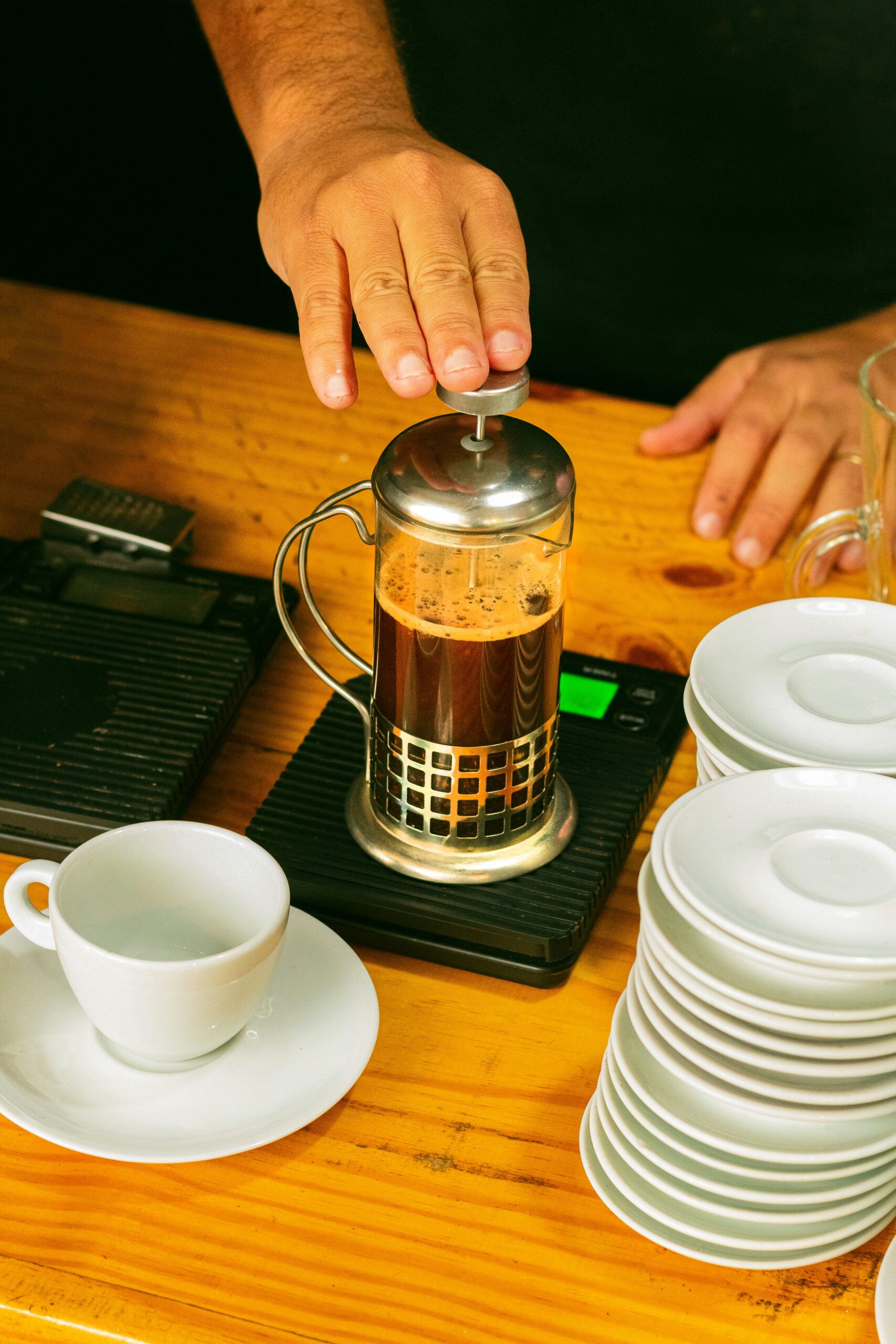The French Press Coffee Maker has captivated coffee enthusiasts since its inception, offering a unique brewing experience that enhances flavor extraction. With rich history and exquisite design, this timeless apparatus continues to be a staple in kitchens worldwide. Understanding how it works, from selecting the right coffee beans to perfecting grind size, can elevate your daily brew. Furthermore, mastering water temperature and brewing time plays a crucial role in achieving the best results. Dive into the secrets of classic brewing and unlock the full potential of your French Press Coffee Maker for a perfect cup every time.
Understanding the French Press Coffee Maker
The French Press Coffee Maker is a beloved brewing tool known for its simplicity and ability to enhance coffee’s rich flavors. This method involves steeping coarsely ground coffee in hot water, allowing the grounds to infuse and release their essential oils.
Here’s what you need to know:
Design: The typical French Press consists of a glass or stainless-steel beaker, a lid, and a plunger with a fine mesh filter. This construction allows for efficient extraction of flavors.
Brewing Process:
- Add coarsely ground coffee and hot water into the beaker.
- Stir gently to ensure all grounds are saturated.
- Place the lid on and let it steep for a few minutes.
- Slowly press the plunger down to separate the grounds from the brewed coffee.
Flavor Profile: Using the French Press Coffee Maker captures the full-bodied essence of coffee, delivering a richer and more aromatic cup compared to other brewing methods.
By understanding this classic tool, you can start your journey toward brewing exceptional coffee that showcases its true character. Embrace the tradition with the French Press Coffee Maker and enjoy a coffee experience like no other!
The History of French Press Coffee
The French Press Coffee Maker, often adored by coffee enthusiasts, boasts a rich history that dates back to the 19th century. Here’s a brief breakdown of its evolution:
Origin: The origins of the French press can be traced to Italy. In 1929, an Italian company patented a primitive design similar to the modern French press.
Development: The French Press gained popularity in France in the 1930s. Notably, a French designer named Attilio Calimani improved the design with a cylindrical pot and a plunger system, setting the stage for what we now recognize.
Renaissance: The 1950s saw a resurgence of interest in the French Press Coffee Maker, particularly in Europe and America, as coffee culture blossomed.
Modern Era: Today, coffee aficionados revere the French Press not just for its historical significance but also for its ability to extract rich flavors. Its simplicity and elegance have made it a staple in kitchens worldwide.
Understanding the history of the French Press Coffee Maker adds to the appreciation of this timeless brewing method, making every cup a connection to the past.
How the French Press Works
Understanding the mechanics behind the French Press Coffee Maker is essential for brewing that perfect cup of coffee. This method stands out due to its simplicity and effectiveness. Here’s how it works:
Brewing Process:
- Coarse Ground Coffee: Begin with coarsely ground coffee, as a finer grind can clog the filter.
- Hot Water Added: Pour hot water over the coffee grounds in the carafe. The water should be around 200°F (93°C) for optimal extraction.
- Brewing Time: Allow the coffee to steep for about 4 minutes. This duration is crucial for extracting the right flavors.
Pressing:
- After steeping, slowly press the plunger down. This separates the coffee grounds from the liquid, ensuring a smooth brew.
Comparison of Brewing Methods
| Method | Flavor Profile | Ease of Use | Equipment Needed |
|---|---|---|---|
| French Press | Full-bodied | Moderate | French Press Coffee Maker |
| Drip Coffee | Milder | Easy | Coffee Maker |
| Espresso | Intense | Difficult | Espresso Machine |
The French Press Coffee Maker excels in producing rich and robust coffee, appealing to aficionados who appreciate full-bodied flavors. By mastering this brewing technique, you can elevate your coffee experience significantly.
Choosing the Right Coffee Beans
Selecting the right coffee beans plays a crucial role in achieving the perfect brew with your French Press Coffee Maker. Different beans impart unique flavors, aromas, and qualities to your coffee. Here’s how to choose wisely:
Single-Origin vs. Blends:
- Single-origin beans offer distinct flavors linked to their region.
- Blends combine beans from various locations, providing a balanced taste. Try both to discover your favorite.
Roast Levels:
- Light Roast: Bright, fruity, and acidic flavors.
- Medium Roast: Balanced flavor with mild acidity.
- Dark Roast: Rich, bold, and chocolaty with low acidity.
Freshness: Always choose freshly roasted beans. Look for a roast date on the package, and opt for beans used within a month of roasting for best results.
Quality: Seek out specialty-grade coffee that scores above 80 points on coffee rating scales. Such beans enhance your French Press Coffee Maker experience.
Experiment with various types and discover which meets your palate’s preferences for an extraordinary coffee indulgence!
The Importance of Grind Size
When it comes to using a French Press Coffee Maker, the grind size of your coffee beans significantly impacts the flavor and strength of your brew. Here’s why:
Coarse Grind: This is the ideal size for a French Press. It allows for even extraction without clogging the filter. A coarse grind produces a smoother, less bitter cup of coffee.
Medium Grind: While still usable, this size can lead to over-extraction. It might create a slightly gritty texture and a more pronounced bitterness in your coffee.
Fine Grind: Avoid this size for French Press; it will result in a muddy brew and can clog the mesh filter. Additionally, fine grounds lead to over-extraction, producing unpleasant flavors.
Comparison Table of Grind Sizes
| Grind Size | Best For | Flavor Profile |
|---|---|---|
| Coarse | French Press Coffee Maker | Smooth and balanced |
| Medium | Drip coffee makers | Slightly bitter |
| Fine | Espresso machines | Overly bitter |
In summary, using the correct grind size enhances your experience with a French Press Coffee Maker, ensuring every cup is rich and flavorful. Remember, a coarse grind brings out the best in your brewing!
Water Temperature and Its Impact
When brewing coffee with a French Press Coffee Maker, water temperature plays a crucial role in extracting the best flavors. Here’s why temperature matters:
Optimal Range: Aim for a water temperature between 195°F to 205°F (90°C to 96°C). This range helps extract the desired compounds without burning the coffee.
Too Hot: Using boiling water (above 212°F) can lead to a burnt taste, overshadowing the coffee’s natural flavors.
Too Cold: Water below 195°F fails to extract essential oils and flavors, resulting in a weak brew.
Comparison Table of Water Temperatures
| Temperature Range | Effect on Brewing |
|---|---|
| Below 195°F | Weak flavor extraction |
| 195°F – 205°F | Ideal for rich, full flavors |
| Above 205°F | Over-extracted, burnt taste |
In conclusion, achieving the right water temperature in your French Press Coffee Maker is essential for a delicious cup. By maintaining the optimal range, you enhance the coffee’s richness and aroma, ensuring the perfect brew every time.
Brewing Time: Finding the Sweet Spot
When it comes to the French Press Coffee Maker, timing plays a crucial role in achieving that perfect cup of coffee. Here’s how to get it right:
- Optimal Brewing Time: Strive for a brewing time of four to five minutes. This range allows for proper extraction, enhancing flavor without bitterness.
- Adjusting for Personal Taste:
- If you prefer a stronger brew, increase the time to about six to seven minutes.
- For a milder flavor, reduce the brewing time to around three minutes.
Quick Tips for Perfect Brewing:
- Start your timer immediately after adding hot water to the coffee grounds.
- Use a timer to avoid guesswork; precision is key.
- Taste tests can help perfect your brew. Experiment within the recommended time frame until you find your favorite flavor profile.
Summary Table: Brewing Time Recommendations
| Coffee Strength | Brewing Time |
|---|---|
| Mild | 3 minutes |
| Balanced | 4-5 minutes |
| Strong | 6-7 minutes |
With the right timing, your French Press Coffee Maker will deliver an exceptional brew every time!
Tips for Perfectly Brewed Coffee
Brewing the perfect cup of coffee with a French Press Coffee Maker requires attention to detail. Follow these essential tips to enhance your brewing experience:
Use Fresh Coffee Beans: Opt for whole beans and grind them just before brewing. Fresher beans result in better flavor.
Experiment with Grind Size: A coarse grind works best for French Press. It avoids over-extraction, allowing you to capture the coffee’s full essence.
Measure Your Coffee and Water: A standard ratio is 1:15 (1 part coffee to 15 parts water). Adjust according to your taste preferences.
Control Water Temperature: The ideal brewing temperature is between 195°F to 205°F. Too hot or too cold can produce bitter or weak coffee.
Steep Time Matters: Let your coffee steep for about 4 minutes. This duration allows the flavors to develop without becoming bitter.
Use a Timer: Consistency is key! Using a timer helps you replicate your perfect brew time after time.
By following these tips, your French Press Coffee Maker will unlock the aromatic and rich flavors of your coffee. Enjoy your brewing journey!
Common Mistakes to Avoid
Using a French Press Coffee Maker can be a delightful experience, but a few common mistakes can hinder your coffee’s quality. To ensure a perfect brew, keep an eye out for the following pitfalls:
- Over-extraction: Brewing for too long can lead to bitterness. Aim for a brewing time of 4 to 5 minutes for the best flavor.
- Incorrect grind size: Use a coarse grind to prevent clogging the filter. A fine grind may result in a gritty texture and muddy coffee.
- Wrong water temperature: Water that is too hot can scorch your coffee grounds. Aim for a temperature between 195°F and 205°F.
- Not using enough coffee: A common mistake is under-measuring. Use a coffee-to-water ratio of 1:15 (1 part coffee to 15 parts water) for a balanced cup.
By avoiding these mistakes, you can experience the full potential of your French Press Coffee Maker and enjoy a rich, aromatic brew every time. Happy brewing!
Cleaning and Maintaining Your French Press
To ensure your French Press Coffee Maker continues to deliver the best brews, proper cleaning and maintenance are essential. Here are some effective tips for maintaining your French press:
- Immediate Rinse: After brewing, rinse the carafe with warm water to prevent coffee residue from sticking.
- Disassemble Carefully: Take apart the plunger and filter from the French press for a thorough clean.
- Soap and Water: Use mild dish soap and a soft sponge for cleaning the carafe. Avoid abrasive materials that can scratch the surface.
- Filter Care: Soak the metal filter in a vinegar solution to remove coffee oils. Rinse it well afterward.
- Dry Thoroughly: Allow all components to air-dry completely to prevent mold growth.
Regular Maintenance: Conduct regular maintenance on your French Press Coffee Maker by checking for wear on the filter and replacing it when necessary.
Keeping your French press clean not only enhances the flavor of your coffee but also prolongs the life of your coffee maker, ensuring every cup is as delightful as the last!


